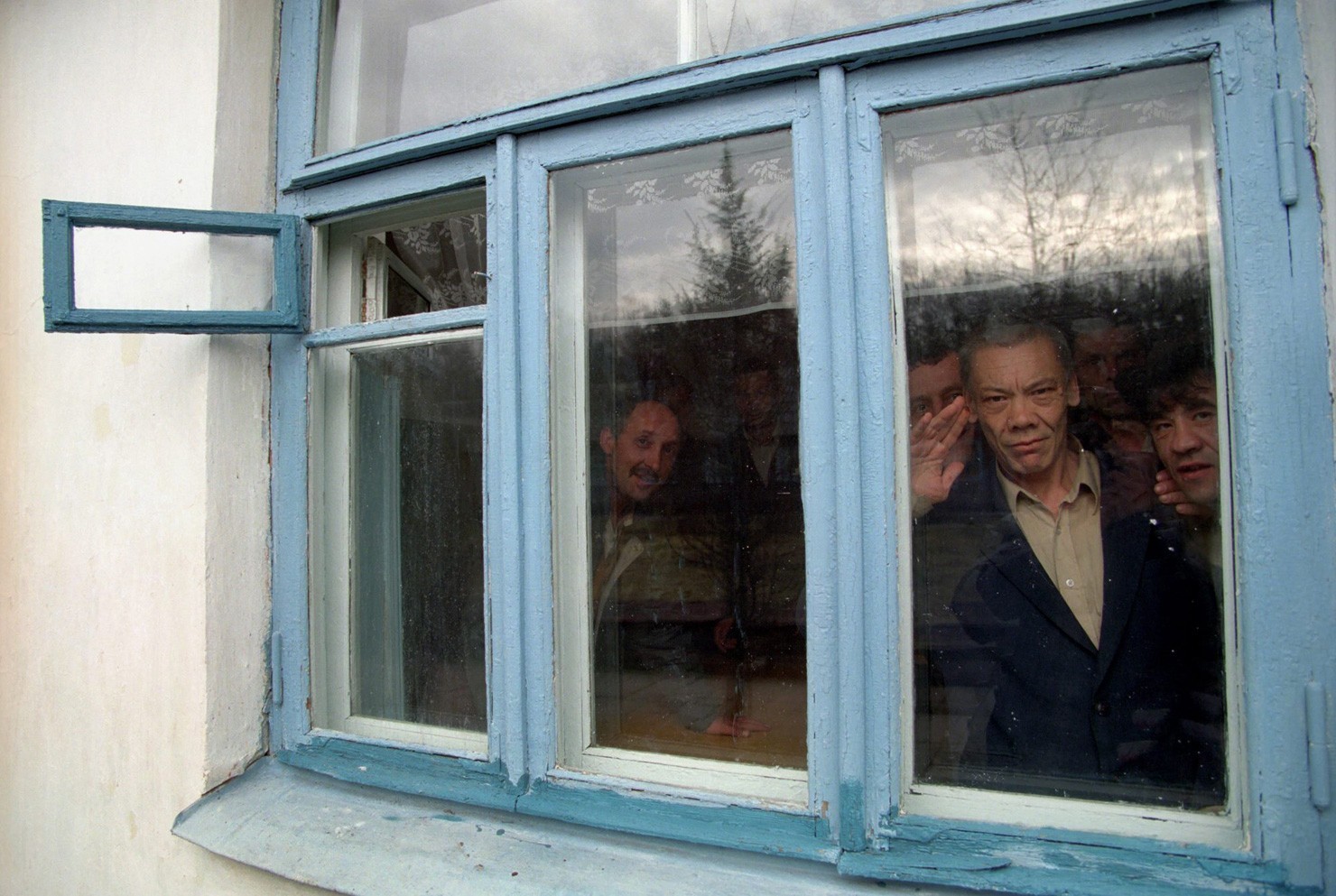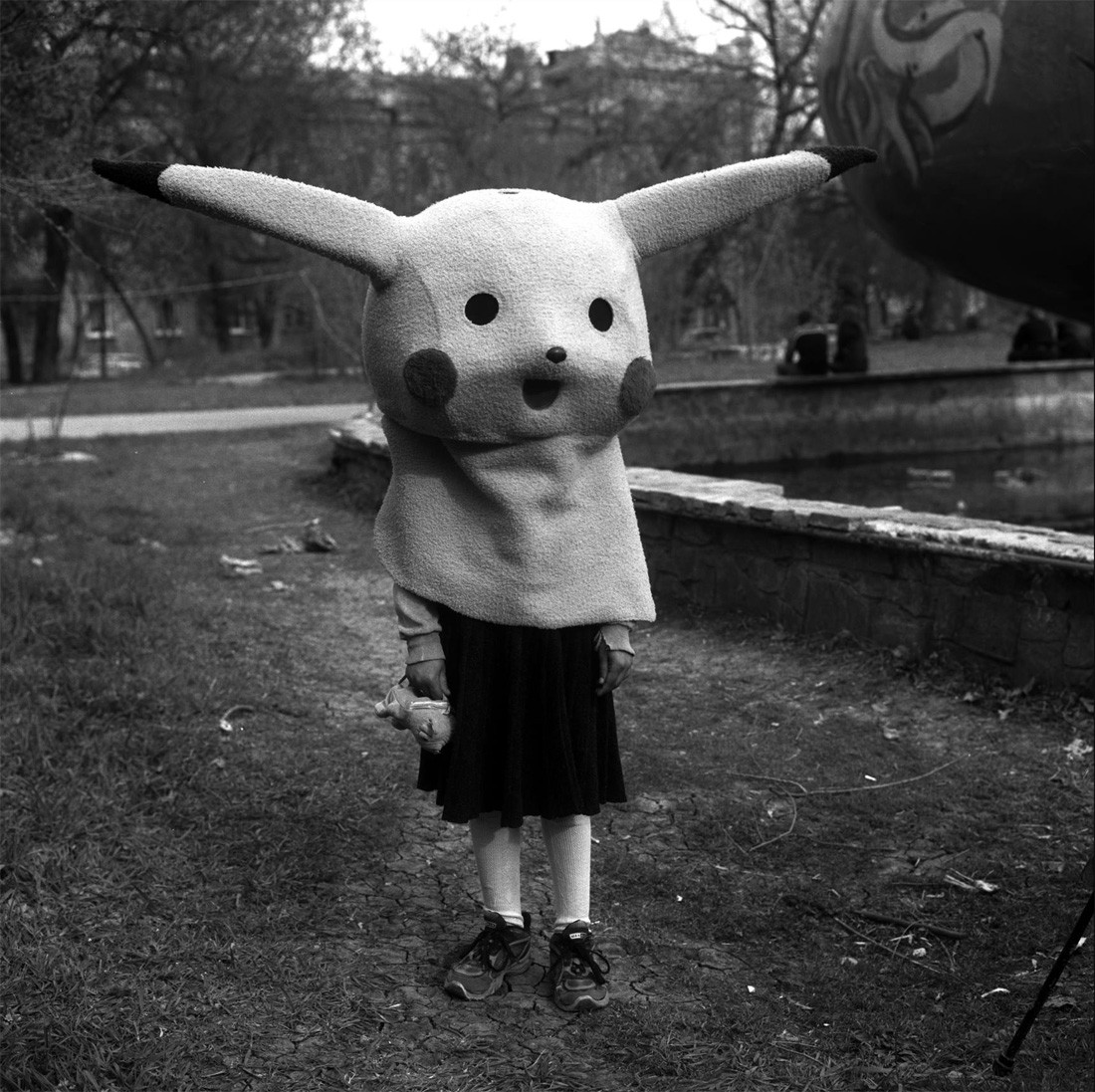
Alexander Chekmenev: I’m Interested in Collecting Pieces of the Past
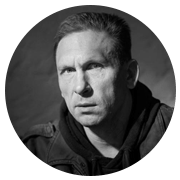
A year ago in his Bird in Flight interview two times winner of World Press Photo Donald Weber said that Alexander Chekmenev was the best photographer in the post-Soviet territory. “They say that Pushkin is Russia’s greatest chronicler of life, that he found a way to express social themes in the form of tragedy and comedy through literature. I see photographer Sasha Chekmenev as a modern day Pushkin with a Rolleiflex, a chronicler of contemporary Ukrainian society, documenting the existential rift between tragedy and comedy.” – Weber explains.
Many young photographers whom Bird in Flight interviewed for our Portfolio series said that Chekmenev was an inspiration for them. “Sasha is one of the greatest living photographers — Anastasia Taylor-Lind, a British photographer, comments — his work is the source of much inspiration. What moves me most about his photography is the humanity and tenderness with which he approaches his subjects. He photographs the hard end of life, but with such gentleness and compassion.”
“Alexander Chekmenev made street photography a religious act and a ritual — Alexander Lyapin, editor-in-chief of Foto.ua website says. — For him it is not documenting the amusing scenes of street life. The street for Chekmenev is an occasion to explore human character in general. A documentary image in Chemenev’s photography is a sacrifice that the author makes to his idea, his feelings, his inner gods.”
When talking about his works, Chekmenev himself does so without using big words. We sit at the kitchen table with stacks of photographs ready, in his 1-room apartment on the left bank of Kyiv. Chekmenev, who as always had neatly combed hair and wears a carefully ironed polo shirt, pours boiling water into cups with ground coffee, covers them with tin foil and smoothes it over the rim of the cup, and shows me the pictures while the coffee is brewing.”
Everything critics say about your work is that you document the time we are living through…
The time we were living through. I realized I lived at the end of the century, at the end of the millennium even, and hence these particular years were important for me, the 90s. Even with the shooting, I started at the beginning of the 90s, my first photographs were taken in 1993…
You still keep shooting now, don’t you?
That’s true. But I had to get to the core then. Because the 90s are over, and what’s left? If there are no photographs, there are only memories.
{“img”: “/wp-content/uploads/2015/08/Chekmenev_26.jpg”}
How did you come to this realization at the age of 25 back then?
It was always interesting for me to see how people lived 100 years ago, you know. And just like me, there will be people in 50, in 100 years who would be interested in looking at us. And I realized that my calling is to create this reference document for them. This is the reason why I came to earth. I planted my trees, I have two children, and a house – well, here it is. (Editorial note: There’s a widely known saying in Russian that a man in his lifetime has to build a house, plant a tree and raise a child). What next? Everything passes, even children change… Everything around changes. The document stays. I think I’m doing a good job. Fulfilling my calling. I started to print now, on museum quality paper that lasts for up to 200 years.
{“img”: “/wp-content/uploads/2015/09/Chekmenev_022.jpg”},
{“img”: “/wp-content/uploads/2015/08/Chekmenev_31.jpg”},
{“img”: “/wp-content/uploads/2015/08/Chekmenev_29.jpg”},
{“img”: “/wp-content/uploads/2015/08/Chekmenev_30.jpg”}
Have you ever thought about how people would perceive your photos in a hundred years? What would they say?
I think they’d be surprised.
At what?
At what this time was like. What characters there existed.
{“img”: “/wp-content/uploads/2015/09/Chekmenevadd_09.jpg”}
{“img”: “/wp-content/uploads/2015/08/Chekmenev_3.jpg”}
{“img”: “/wp-content/uploads/2015/08/Chekmenev_6.jpg”}
{“img”: “/wp-content/uploads/2015/08/Chekmenev_9.jpg”}
{“img”: “/wp-content/uploads/2015/09/Chekmenevadd_19.jpg”}
{“img”: “/wp-content/uploads/2015/09/Chekmenevadd_26.jpg”}
{“img”: “/wp-content/uploads/2015/09/Chekmenevadd_38.jpg”}
Let’s talk about characters then. All your characters have something subtly in common. Maybe it’s something in their eyes. They have such… soulful eyes and they look with such trust. And the feeling that this moment is solemn – in their poses, in their raised chins… As if they all knew about your aim, knew you were shooting for the archive, were helping you create this document.
I’ll give you one example. It was during Maidan (Editorial note: Street protests in Kyiv in late 2013-early 2014). I was shooting a beggar. And I asked him to put away his cup – I wanted to shoot him without a cup. And to ask him to do it, I needed to explain him why I was doing it, why I was shooting. Cause everyone’s afraid that it will be in the newspaper, that people will laugh at them. And I say, hey, we’ll be gone, but the picture will still be here. He replied: “Oh! You are right – the memory will go on!” I asked him to look away from the camera, I shot several photographs and got a good one. Several weeks after I came to the same place and saw his ‘colleague’ there. I took a camera out. He asked: “Why are you doing this?”. And the first guy – he was there nearby – recognized me and told his friend: “Come on, it will be a memory! You won’t be around – the photo will. Come one!”. I was surprised that this person – who, I would expect to get drunk and forget my words – remembered them. I mean, he knows, why he is in the street with a cup now. But they are not degraded people. They have this dignity. And if you approach them and talk to them, you’ll realize he has the kind of problems that will make you ashamed to ever complain about yours again.
{“img”: “/wp-content/uploads/2015/08/Chekmenev_34.jpg”}
{“img”: “/wp-content/uploads/2015/08/Chekmenev_28.jpg”}
Still, why the misfits? Why beggars, cripples? People who are somewhat… ridiculous?
There you have it – ridiculous is a good word. Misfits, because they don’t fit this reality. There are many ordinary people walking down the street, I’m not interested in shooting them. Ridiculousness is probably what I am looking for. These are the forgotten people. It could be they do not fit on purpose – to attract attention. And in general, if there are people like this, it means there’s something wrong with us. I’ve been to Bratislava recently, and I saw only a couple beggars a day there. The unemployment rate there is low…
There are homeless people everywhere. It’s just that in Paris, for instance, it’s just the people with suitcases who sip wine in underpasses.
Yes, it’s the way of life, that’s what it is. By the way, they were not called homeless in the 90s. Only by the end of 90s, I guess.
I think they were called vagabonds?
Yes, yes. People of the street. This was more appropriate. And ‘homeless’ sounds insulting already. It’s a shame when they say that Bob Mikhailov shoots the homeless. It could be that some of them were homeless, that is, with no fixed abode. But many people I shot did have a home. They just have this way of life. You see, on TV you see one thing – everything’s nice, happy people in suits. And then you walk out on the street and see, say, Uncle Volodia, who has eight prior convictions. And if you wonder why, they were for welfarism (Editorial note: Welfarism was punishable by prison time in USSR). Half a year after release they locked him up for a year again. Because he didn’t work on principle.
This little one’s nickname is Lenin. Most probably because of his cap and jacket. He is interesting himself, children always gathered around him. Another guy approached and I asked him to sit, to make them more even in height. And Lenin started acting already, he got into his character.
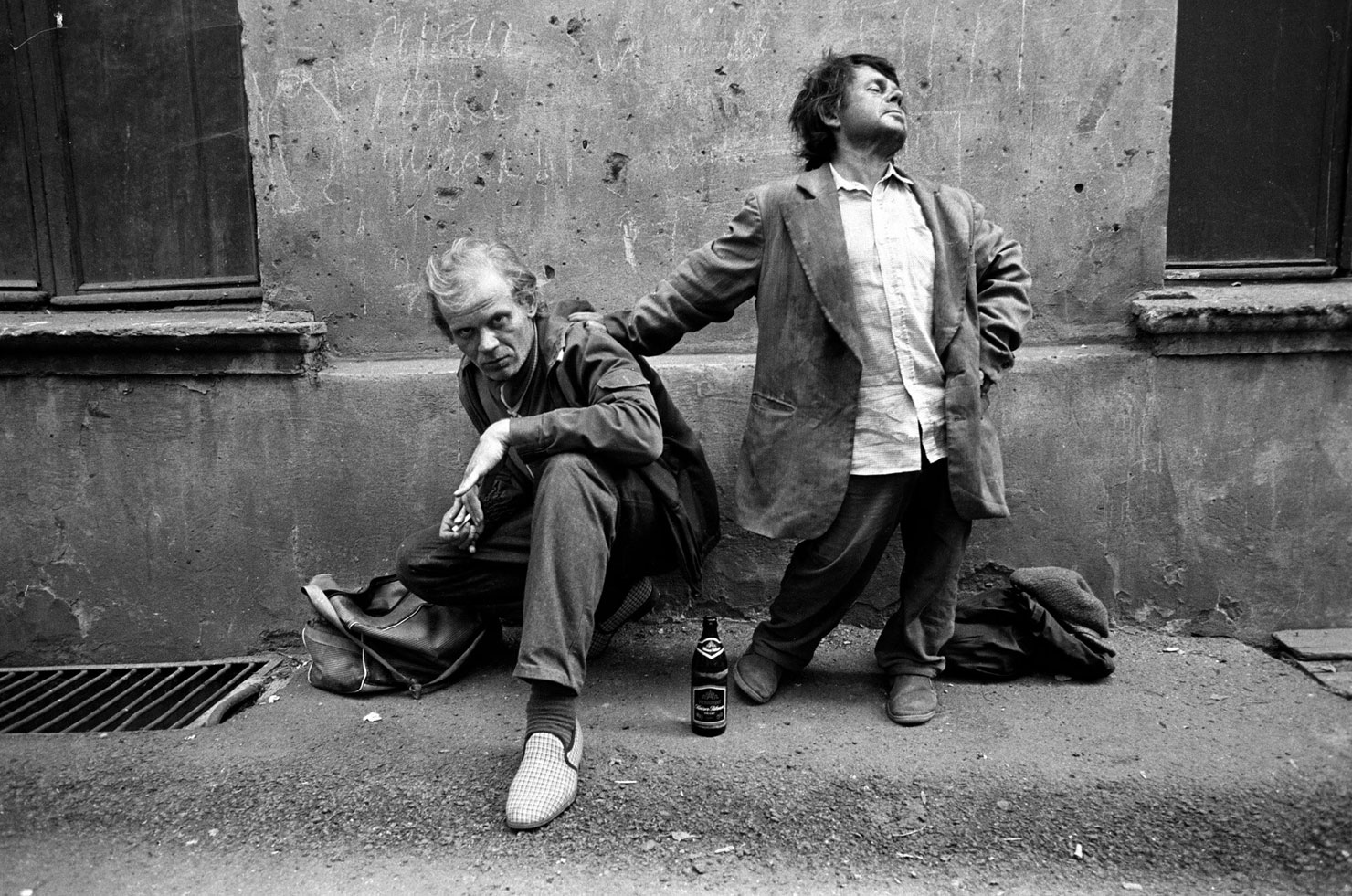
Luhansk. May First Culture and Recreation Park. I met a photographer I knew there, he was with a friend in a Pokemon costume – the children took pictures with him. It was late, so we decided to have some cognac. We poured it into plastic cases for photo film, this guy just took his head off, when the girl approached and asked for a photo with Pokemon. She took this head and put it on herself. We saw it and went silent – there was something special and sad about this moment.
{“img”: “/wp-content/uploads/2015/09/Chekmenev_pokemon1.jpg”},
{“img”: “/wp-content/uploads/2015/09/Chekmenev_pokemon2.jpg”}
How do you find them? It is always a coincidence, or are you looking for them on purpose?
I can go to Odessa, to Lviv. I went to Luhansk when I lived in Kyiv. You need to go the train station here, to Ptichka, the zoomarket, and its vicinity. And it happens on some days you don’t find anything. I didn’t shoot much this year and the year before. The war, Maidan… diverted my attention. I went beyond my typical characters. And then, not long ago I saw two people I would like to shoot it one day. I thought – phew, my eyes are open again.
How do you realize – this is the guy?
The same way it happens with a woman. You want this one and you don’t want that one. And you don’t explain yourself, why. Some kind of vibe… she passes by – you realize, that’s it, that’s the one! Her image works. It’s the same with these people – we haven’t properly met yet, but I already have the feeling this is an interesting person. If they are not degraded, completely drunk or aggressive.
{“img”: “/wp-content/uploads/2015/09/Chekmenevadd_69.jpg”},
{“img”: “/wp-content/uploads/2015/09/Chekmenevadd_70.jpg”},
{“img”: “/wp-content/uploads/2015/09/Chekmenevadd_62.jpg”},
{“img”: “/wp-content/uploads/2015/09/Chekmenevadd_71.jpg”}
These are some aggressive people in your photos, too.
It happens, I make mistakes. I misjudge people. There is sometimes aggression from the onlookers. This is why I try to look around when I’m shooting. When someone is watching me, I can feel it with my back before I see them. You pull out a camera, you attract attention – and become vulnerable.
Elaborate on that.
Well, when you are shooting people like this, someone approaches you and asks why you are doing it. It happens very often. Very!
Do they think you are mistreating them?
Yes. And then I explain someone has mistreated them already, before me. And I gave them a piece of bread at least, when I came. Or a bottle of beer. Because he is incredibly hungover. “And what are you doing here? Have you talked to him? Do you know he lost his house in a fire?”. And after this they don’t disturb me anymore. If someone is too aggressive, you just tell them to f*** off. That’s all.
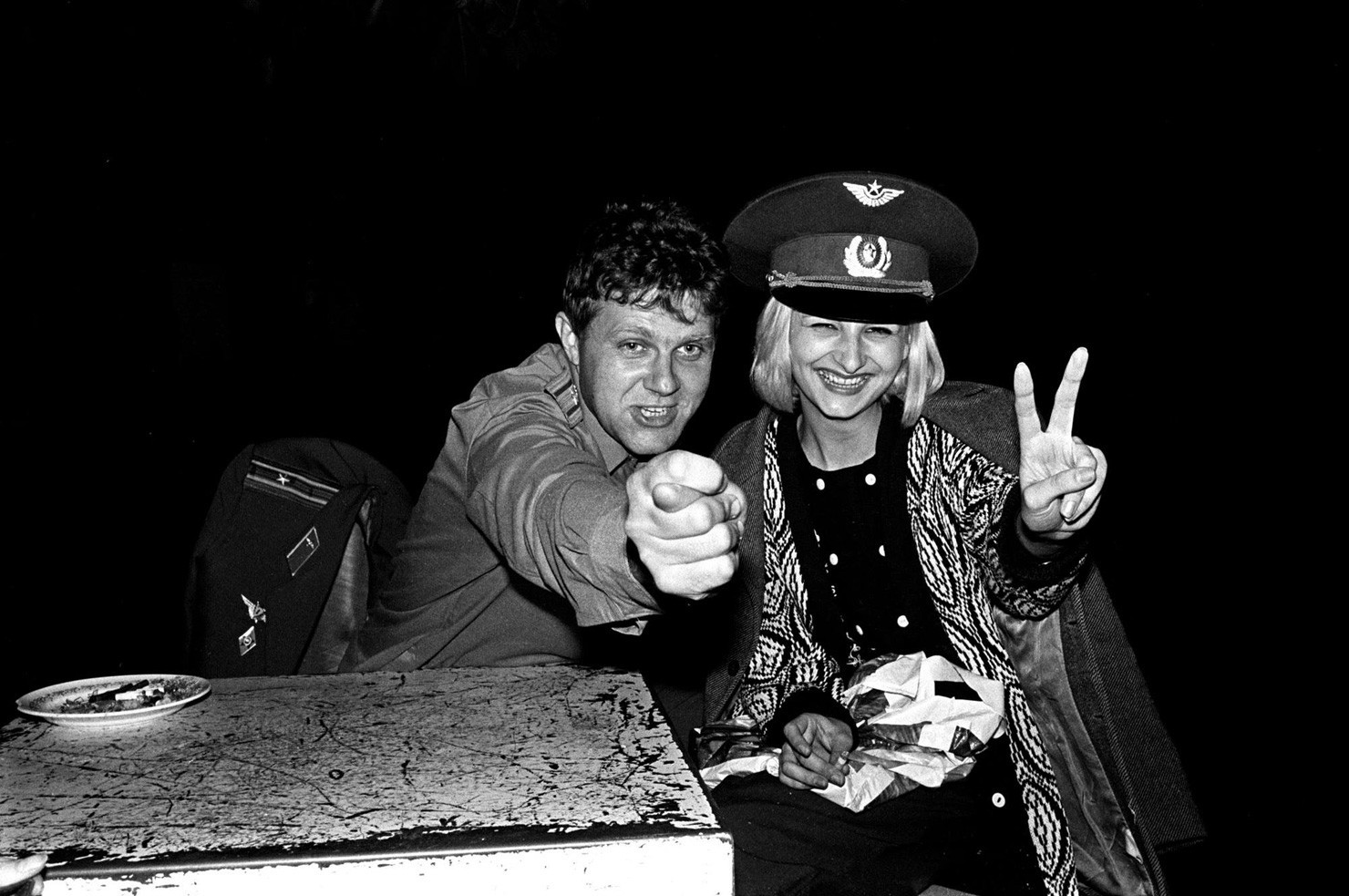
I know that you are interested in stories of the people you shoot, and you follow their lives afterwards. How do you find them?
It’s them who find me. I have a photograph of a woman sleeping under a counter in Odessa Privoz market. Sasha Balahura, the film director, liked this photo and based a script on it in his head. He said, this is the center of the Universe, and there is this woman sleeping in the center of the universe, and hardly anyone notices her, let’s go and find her! And he brought a film-making crew to Odessa. And two people on Privoz recognized this woman from the photograph. She was homeless, ran some errands for people working at the market, then she met someone and disappeared, and after a while they found her dead. To be honest, I had a feeling that story was going to have a sad ending.
There was another case, too. Pasha Hudimov released CDs, and his first CD was with my photographs. And so we’re on a train from Donetsk to Kyiv, two young women enter the compartment, sit across from us, see a CD on the table and ask if they can have a look. We say they can. She is leafing through it and then suddenly starts crying. There is a young man defusing a bomb in the picture. She says: “Where is this photograph from? This is my brother”. And cries. It turns out he died two years before that. A long time ago they argued and they were not in touch and she didn’t even have photographs of him! He died at 26, and the only photo they had was from his school graduation album.
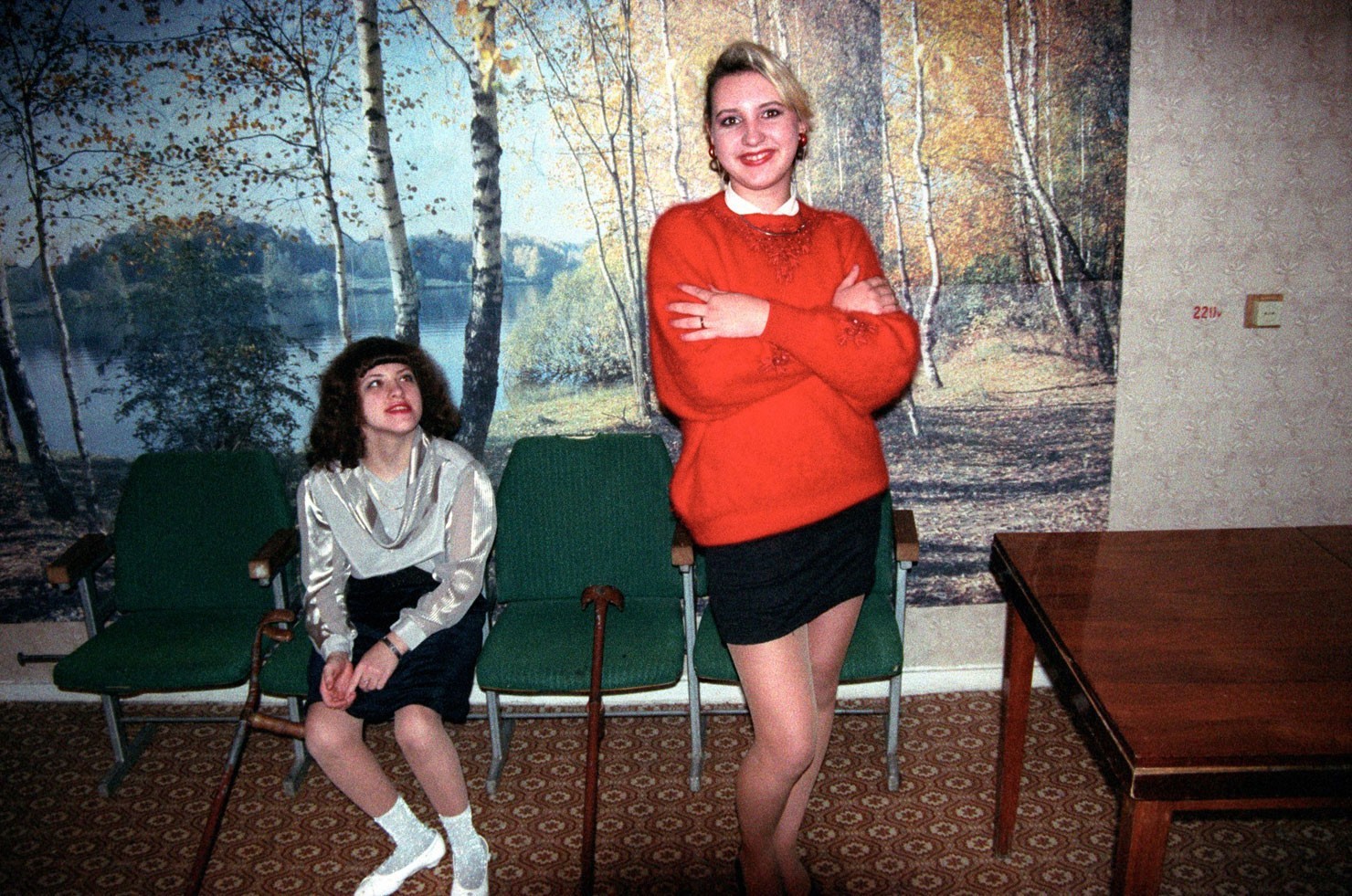
You have an intuition for drama.
Well… (pauses) I wouldn’t want to say it’s for drama. I would want to think I bring luck. But if a person leaves this world, and I’ve captured them before that – it means their image had to be preserved. I have another story, the most mystical of all. A young woman I knew died, and three weeks before that I took her last photographs. And when I changed the photographs from color to black-and-white, a skull appeared behind her shoulder. Clearly. I wouldn’t have paid attention to it if I didn’t know what had happened – she felt death. This death changed me a lot, it made me believe in God. Truly. Truly indeed. Or it’s just that I became an adult. This was in 1995.
I had to get over that death, and these people I am shooting, they helped me… When you go out and you are in no mood, you want nothing, alcohol doesn’t help, nothing helps. And then you talk to those people, and tell yourself: “Calm down, you can’t compare your story with what that guy went through…”
{“img”: “/wp-content/uploads/2015/09/Chekmenevadd_34.jpg”}
Your characters don’t improve my mood, you know. This series where people pose at the cemetery… It’s like Leviathan the movie, or something.
Yeah, this is Luhansk. By the way, they did go to the cemetery there on Easter Sunday. Breaking the customs. It could be that they didn’t know the proper customs. They called it the Day of Rejoicing (Editorial note: A day designated for remembering your dead, usually celebrated a week after Easter Sunday) Beautiful Hill holiday there, I’m not sure why. It could be nobody told them that you have to go to the cemetery on a different day. That it’s better not to eat on the graves. And have such picnic there! And often they would end up fighting or sometimes making love. Different things happen. There I went on purpose.
{“img”: “/wp-content/uploads/2015/09/pasha_lugansk_1994618.jpg”},
{“img”: “/wp-content/uploads/2015/09/pasha_lugansk-230.jpg”},
{“img”: “/wp-content/uploads/2015/09/pasha031.jpg”},
{“img”: “/wp-content/uploads/2015/09/pasha_lugansk-229.jpg”},
{“img”: “/wp-content/uploads/2015/09/pasha171.jpg”}
In fact, there were things surprising for me as well. I have a photograph, about five people, a coffin, and people pose while the deceased person is lying there. I was looking at this photograph trying to realize what was wrong about it. And then I realized the deceased guy was posing, too. They turned his head so that he would look into the camera.
F…k.
Yeah, this is f-d up. And I understand them. They haven’t taken a single photo in their lives, they didn’t have time. And I remember working at a photo studio in 1989 – I studied to be a photographer before I was conscripted – I had assignments not only at weddings, but also at funerals. Weddings and funerals are occasions for people who are close to one another to gather. For better or worse – this borderline states, they make people closer. I haven’t saved any of the pictures I made then though. I didn’t have the understanding then yet.
Recently a group that collects selfies with deceased people was registered on Vkontakte.
I wouldn’t do that. I have several photographs from forensic examinations. I never exhibit them. And not because it’s not ethical. Screw that – ethical or not. I have a different framework. It’s about something else. To be honest, I am afraid they might have negative energy.
I got to forensics when I was young, I rode along on an ambulance, and you have all kinds of accidents there – drowned, hanged, cut, shot people. And sometimes I positioned the people in the photograph and then showed those photographs. This attracts attention, you know. I didn’t do it consciously. I might have wanted attention, that’s why I went there, as low as it can be. And now I think this was wrong. We will have to answer before the justice of heaven, you know – for our deeds, and that includes photographs.
{“img”: “/wp-content/uploads/2015/08/Chekmenev_18.jpg”}
How many photographs do you have left from that period. It’s when everything started. How old were you then?
Twenty-four to twenty-seven. This was the period when I first identified as a photographer. I lived at the photo studio then. Literally – on the floor there. And photography was really my life. I was in love with what I was doing.
What did you do for a living?
I got some peanuts at the art industry complex. Painters had studios there, and I photographed sculptures and painting for them. I also went to cafes, to shoot girls, the waitresses I knew there. I went to develop the pictures and gave it to them on the same day – I received the money and I was good. I remember my first time at a drunk tank. After a while the boss at the complex wants to meet me – his secretary warns me that there was a letter from the police about me – and eventually we talked about something entirely different, he didn’t even mention the letter. I was later explained that everybody was used to a letter at the complex, as it employed artists.
Here is the picture from those days, by the way. This guy was a gatekeeper at a women’s bathhouse. And I was shooting a birthday party there. Everyone knew me – Sania, the photographer – so they asked me to. Of course, the gatekeeper at the women’s bathhouse was horny. I noticed it. I asked him if he wanted any. He nodded. So I took some along.
{“img”: “/wp-content/uploads/2015/08/Chekmenev_27.jpg”}
You don’t have an art-related degree yourself, do you?
Process technician in foundry engineering. Steel shop.
What did you cast?
Bullets! (laughs) I’m joking. Wheels for diesel locomotives.
Could have been bullets. There is an ammunition factory in Luhansk, isn’t it?
Yes, there is one. My father worked there his whole life. From the age of fifteen and until he retired. And I worked a bit. I carried around a camera bag in technical college already. My technical college was near the photo club. I always had the camera on me. I shot graduation albums. Then, in the army, discharge papers for everyone.
Here is the picture: Guys in a bathhouse. I tell them: “Let’s take a picture of a painting before someone steals it”. And half a year after he says: Sania, it’s not just the painting, the whole bathhouse was stolen!
{“img”: “/wp-content/uploads/2015/08/Chekmenev_36.jpg”}
This is a self-portrait in the studio, taken from a tripod. I needed to paint a wall there. The painter gave me blue paint. And it is toxic. I told them: “This is shit, what did you give me”. And this wall was crushing me under its weight. Once we got drunk and I said: “I’ll repaint it now!”. And threw a can of whitewash against the wall. And the guys say: “Hey, it’s much better this way”. I was shooting with this background for a long time after that.
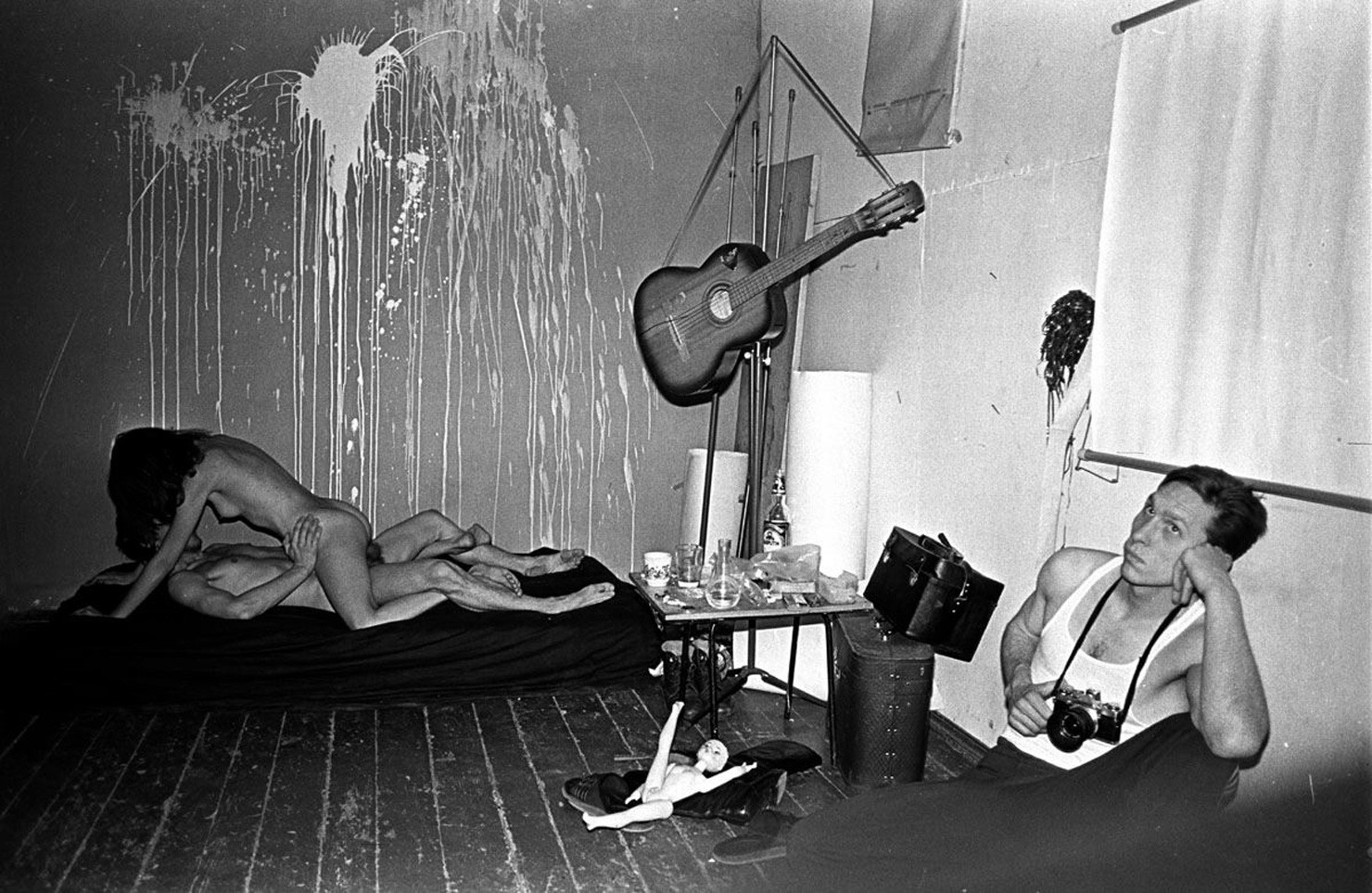
How did you end up on the ambulance?
I had free nights when there was nothing to shoot. And I had a central ambulance station right in the yard of my house. So I came to the medical director and offered him to make a story for the newspaper. He agreed. I was allowed to go on shifts with crew 48. I was woken up on the first very night – there was a call, a night wound.They told me I was lucky. And this is how we started working together. It lasted for about half a year.
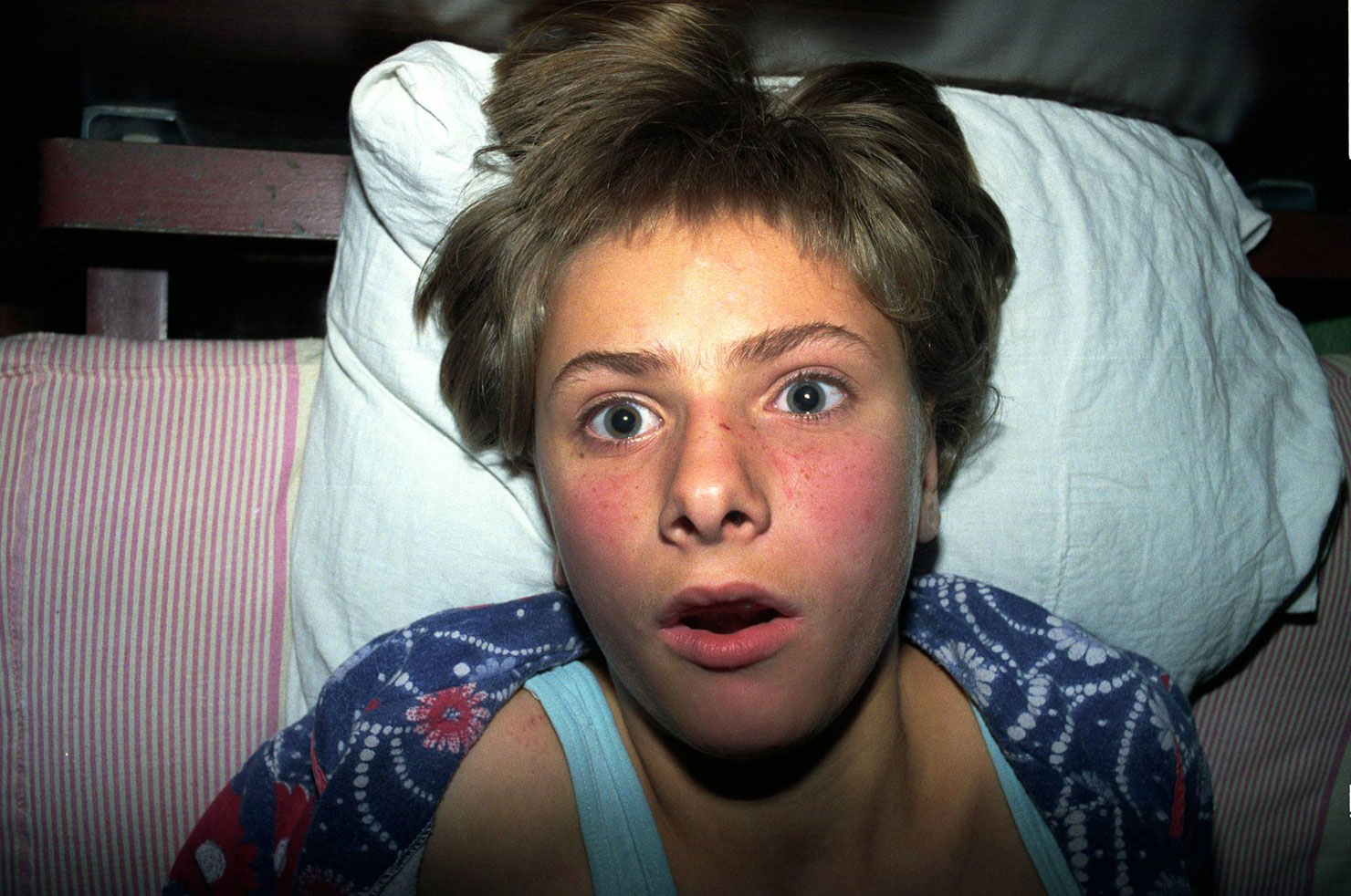
Half a year. So, it was for the newspaper…
To hell with the newspaper. I know this life, but I don’t know that life – and I want to. I was concerned with other things by that time. For instance, how it happens they are so calm when they look at death, at pain. I started to be like them. Say, it’s May 9 (Editorial note: The so called ‘Victory Day’, a state holiday in the USSR and some post-Soviet countries that marks the end of WWII), a grandma and a grandpa had a fight, the grandpa hit her on the head with the back of an axe, blood, it’s been bandaged, she’s being transported in an ambulance, and here come the fireworks for May 9. The doctors are laughing their asses off and click! I have a picture. In fact, they were laughing at what was going on. This is also the kind of a defensive reaction.
I had another Easter case: a head-on collision of two Zhiguli cars. Gangsters in one, police field investigators in the other .And when I was shooting this story, I realized that ambulances will be different, police cars will be different. I think this is very important – to document what will be left behind. These carbonated water machines.
{“img”: “/wp-content/uploads/2015/08/Chekmenev_12.jpg”},
{“img”: “/wp-content/uploads/2015/08/Chekmenev_13.jpg”},
{“img”: “/wp-content/uploads/2015/08/Chekmenev_14.jpg”},
{“img”: “/wp-content/uploads/2015/08/Chekmenev_15.jpg”},
{“img”: “/wp-content/uploads/2015/08/Chekmenev_16.jpg”},
{“img”: “/wp-content/uploads/2015/08/Chekmenev_17.jpg”},
{“img”: “/wp-content/uploads/2015/08/Chekmenev_19.jpg”},
{“img”: “/wp-content/uploads/2015/08/Chekmenev_20.jpg”}
Are you shooting anything now, anything characteristic of our time?
I’m not interested. I get frustrated when plastic and shiny surfaces are in my frame. I would rather keep collecting the pieces of history, pieces of the past. I went to the mine, to the workshops there, and there is this elderly man in his seventies and he is soldering some kind of a microchip with valves. What it is ? What for? It’s like in a museum. I’m still looking for people in hats and suits from the previous century.
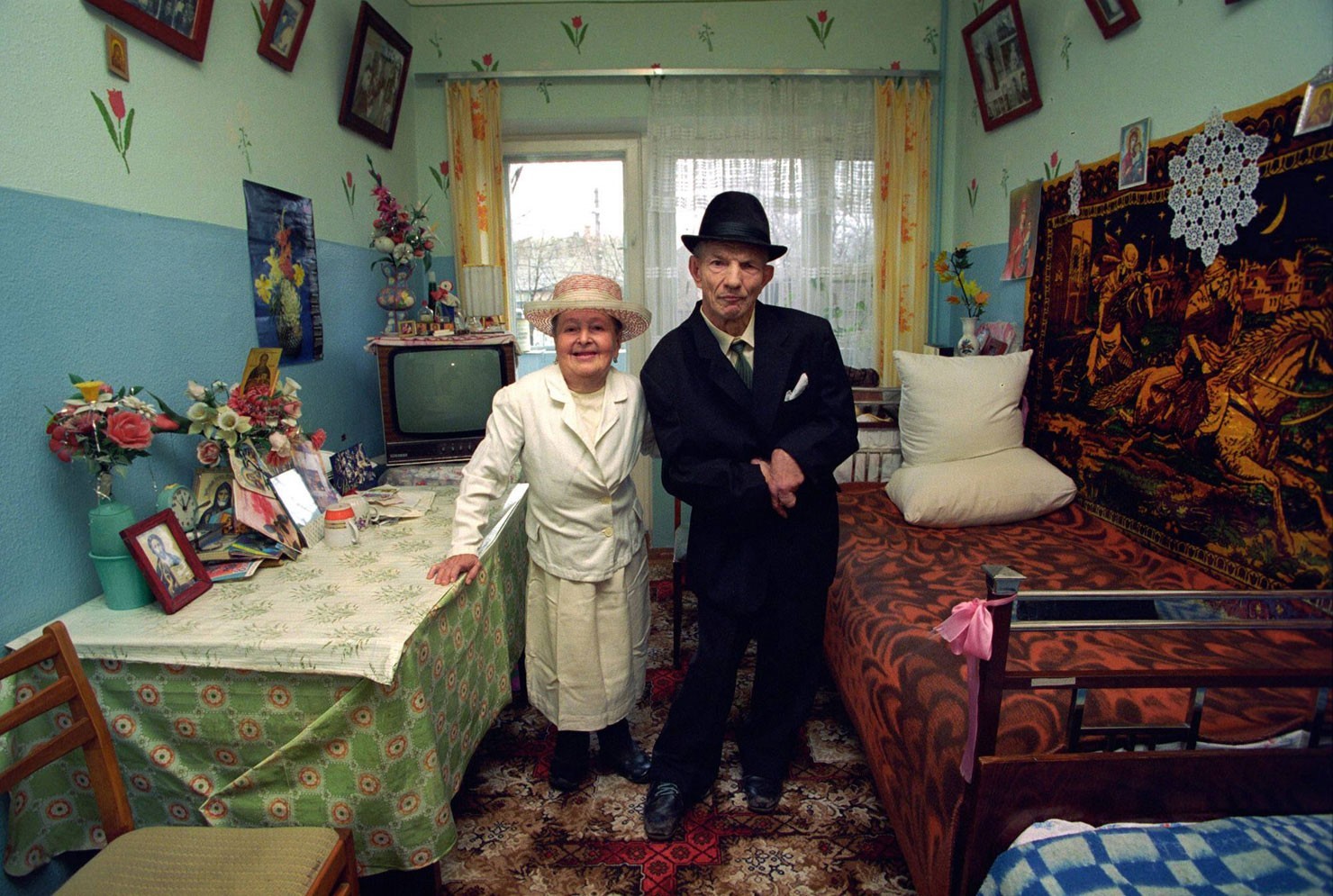
How did you learn to shoot?
I was just shooting and didn’t listen to anyone. Like it was with the “Passport”. Otherwise someone would have told me to shine the reflected light – I didn’t know at the time that you can turn the flash to shine at the ceiling. I shined it in their faces, so that there were no shadows, to have light on the face. Because these photographs could end up in some people’s passports – and some of them did – they are exactly 3×4 in size. It was in 1994-95. I would shoot a series now, both the passports and the close-up portraits.
{“img”: “/wp-content/uploads/2015/09/Chekmenevadd_17.jpg”}
They want to exhibit this series in galleries now, in the US and Canada. And I burned many negatives then. Because I was sitting there twenty years ago in my studio with the realization that I was nothing. That’s it. Village photographer. I’ve been shooting for a year, two, three, and nobody needed it. I had these moments where I would leave one negative from the whole shoot and trash everything else! I still feel like I did twenty years ago. What if recognition doesn’t come? What if they don’t buy my photographs? One exhibition at the gallery, another – and that’s it. What if I don’t get the critical reviews. And I’m spending the last money I have again to have a mock-up of a book made (Editorial note: “Passport”).
I was told that you sold your apartment to publish a book about Donbass.
It was a land parcel. I first sold all of my equipment except the Rolleiflex, then the land parcel. This is an expensive pleasure. But when the book was published, it gave me a new lease on life. I did it to pull myself out by my own hair, like Munchausen.
Do you lack recognition? I had the World Press Photo coordinator Micha Bruinvels over, and he saw you pictures on the walls and told me that if you had applied, you would have won.
I missed it this year. I uploaded the pictures on the contest website a minute before application deadline and then I was late to send them.
Why did you do it last moment?
Well, as always (laughs). Hell knows, maybe it was supposed to be this way. Maybe, I had to give them not to World Press Photo, but to the galleries.
These are all related things.
Well, I don’t sit still. Last year a portfolio review in New York Times, I went there. Dima Gavrish sent my works there instead of me. It was a surprise for me that they were selected. This year it’s Portland, Canada, and I also want to try to get to Houston. And if we are talking about recognition, Nikolay Bakharev is a good example. We were drinking together in a dorm in Moscow in 1992, the photographers from all over USSR came to meet there. Bakharev was there as well. I’d seen his photos and even then I realized he was a genius. He found some girls right there at the dorm and took them to his room to take photographs, we were pulling at the door and he was angry we were distracting him. He jumped out with a camera in his underwear and started yelling. Then I appreciated the passion he approached his work with! I felt he was bound to become famous all over the world. And he gained proper recognition only recently (Editorial note: He was on the shortlist of Deutsche Börse Photography Prize, a prestigious photography award). I think he is a living classic. He does real documentary photography. Documenting the time.
